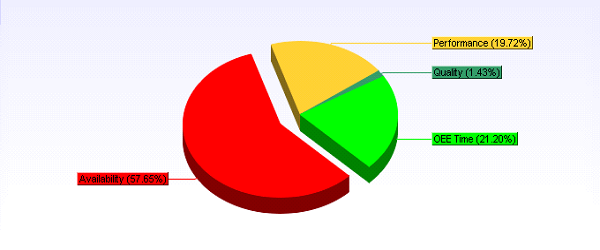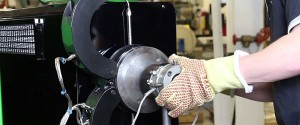
The OEE of each equipment, as isolated machine (independent by other station) is affected only by (5),(6) and (7) theoretical intrinsic value. But once the equipment is part of a system its performance depends also upon the interaction with other n-1 equipments and thus on their performance.
It is now more evident why, for a correct estimate and/or analysis of equipment OEE and system OEE, it is necessary to take into account losses propagation. These differences between single subsystem and entire system need to be deeply analyzed to understand real causes of system efficiency looses.
In particular their investigation is fundamental during the design process, because a correct evaluation of OEE and for the study of effective losses reduction actions (i.e. buffer capacity dimensioning, quality control station positioning); but also during the normal execution of the operations because it leads to correct evaluation of causes of efficiency losses and their real impact on the system.
The Table 3.6 shows how efficiency losses of a single subsystem (e.g. an equipment/ machine), given by Nakajima1 can spread to other subsystem (e.g. in series machines) and then to whole system.
In accordance to Table 3.6 a relevant lack of coordination in deploying available factory resources (people, information, materials, and tools) by using OEE metric (based on single equipment) exists. Hence, a wider approach for a holistic production system design has to focus also on the performance of the whole factory2, resulting by the interactions of its equipments.
|
Single subsystem |
Entire system |
|
|---|---|---|
|
Availability |
Breakdown losses |
Downtimes losses of upstream unit could slackening production rate of downstream unit without fair buffer capacity |
|
Performance |
Idling and minor stoppages |
Minor stoppages and speed reduction could influencing production rate of the downstream and upstream unit in absence of buffer |
|
Quality |
Quality defects and rework |
Production scraps and rework are losses for entire process depends on where the scraps are identified, rejected or reworked in the process |
This issue have been widely debated and acknowledged in literature. Several Authors have recognized and analyzed the need for a coherent, systematic methodology for design at the factory level.
Furthermore, the following activities, according to have to be considered as OTE is also started at the factory design level:
- Quality (better equipment reliability, higher yields, less rework, no misprocessing);
- Agility and responsiveness (more customization, fast response to unexpected changes, simpler integration);
- Technology changes;
- Speed (faster ramp up, shorter cycle times, faster delivery);
- Production cost (better asset utilization, higher throughput, less inventory, less setup, less idle time);
At present, there is not a common well defined and proven methodology for the analysis of System OEE during the system design. By the way the effect of efficiency losses propagation must be considered and deeply analyzed to understand and eliminate the causes before the production system is realized.
In this sense the simulation is considered the most reliable method, to date, in designing, studying and analyzing the manufacturing systems and its dynamic performance. Discrete event simulation and advanced process control are the most representatives of such areas.





